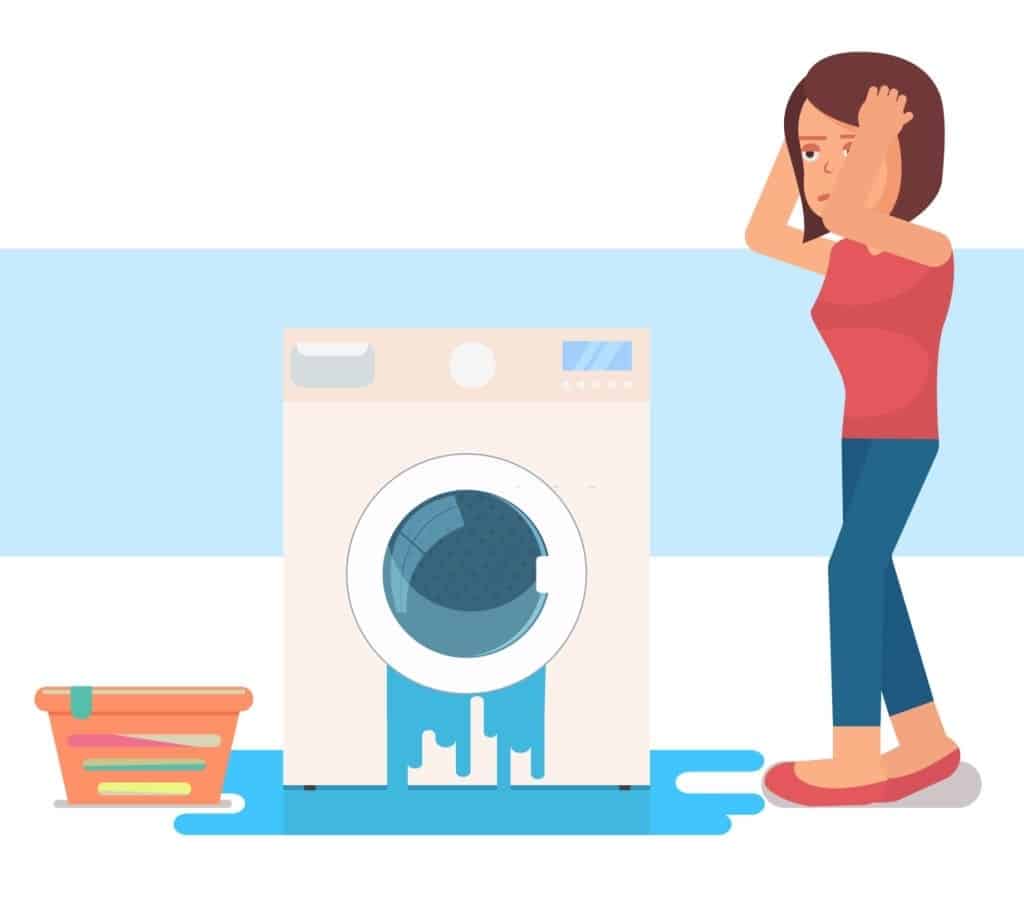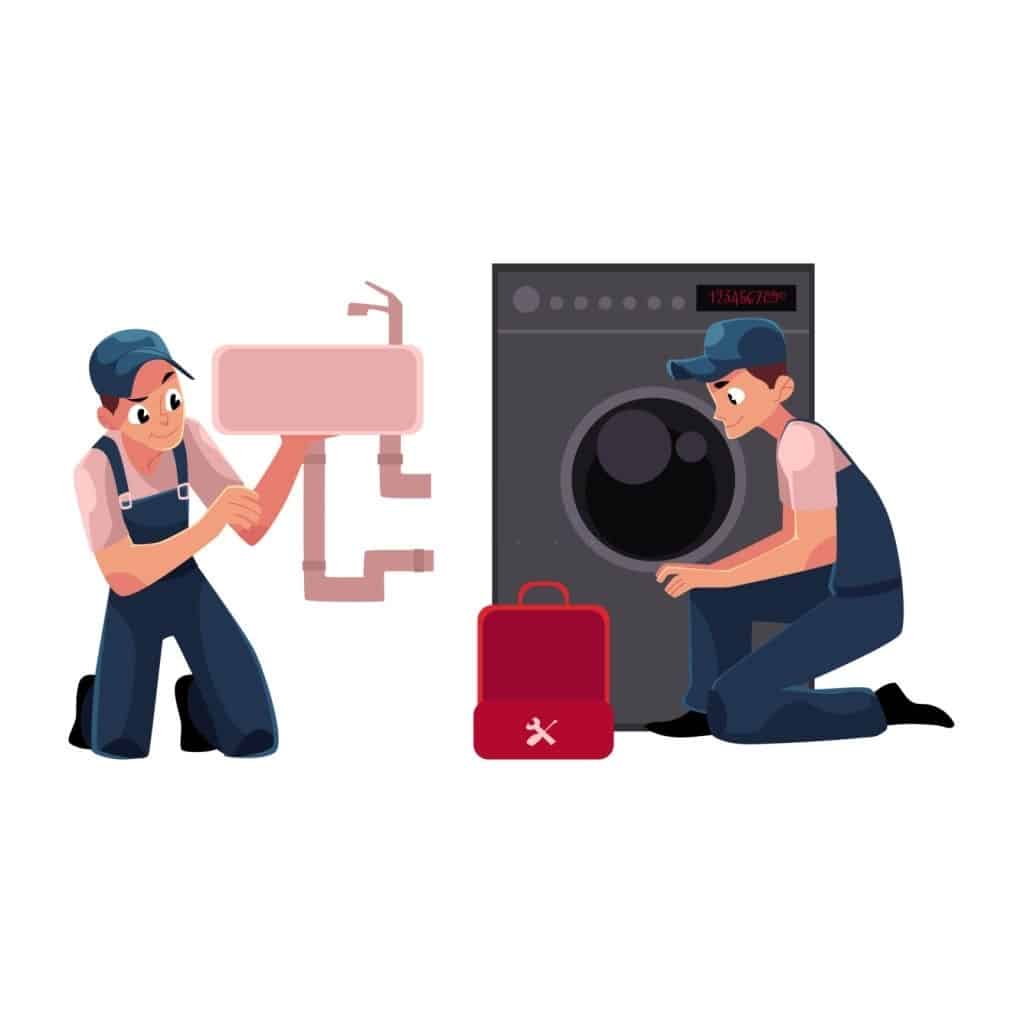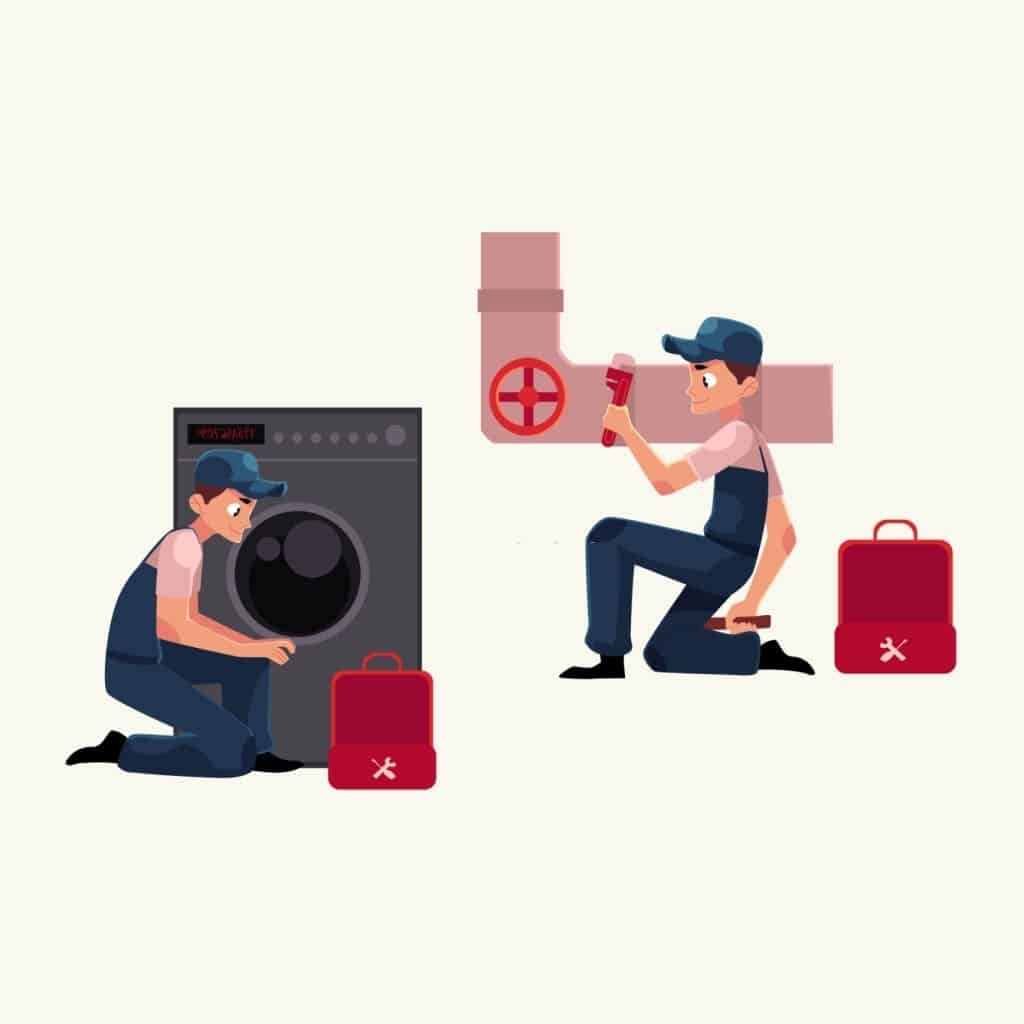Solve Washing Machine Overflow Problem

Nothing is more annoying than a washing machine water overflow. You will not like to experience the soapy water all over your floor. It is a hassle no one would like. There are some common washing machine problems you can face but drain pipe overflow is one of the most concerning problems of washing machine appliances. If you know a certain cause of this overflow and avoid it the problem may not occur. If the pipe is not wide enough to circle the water properly it drains. This is why the pipe size is important according to the overflow issue.
Washing Machine Draining Cycle

Normally, the washing machine removes water from the tub once the washing cycle is complete. It uses a pump that forces water into a drain hose that bends up and out of the machine to meet the standpipe, which is usually positioned near your hot and cold water supply valves. If your washer and its components are working properly, water will flow through the hose and into the standpipe, where it will be delivered to your home's main sewer line. The washing machine's drain can overflow if any portion of the drainage system malfunctions.
Clogged drains or drain pipes that are too small in diameter to accommodate the volume of water required cause washing machine drains to overflow as I have mentioned before. Clogging is the most common cause, and the simplest cure is to use a snake or an enzymatic cleaner to clean the drainpipe and then add a lint catcher. Installing a laundry sink or a larger-diameter drain pipe would be a more long-term solution. Again, try to invest in quality Washing machines for sustainability. House of Butterfly is the place you can trust.
Main Reason for the Overflow
As we know primarily, washing machines overflow for two main reasons, one is drain clogged, another one is the pipe can not take the load. If you notice overflow, immediately diagnose the problem and take action to fix the overflow problem.
Fix the Clog Problem by Yourself

Step 1: Identity/Find the Drain Hose
Turn your washing machine off and look for the drainpipe at the back of the machine. This hose is usually found near the bottom of the machine and is black. The hose should either lead to a laundry sink, standpipe, floor drain, or directly into a PVC pipe if you follow it. Locating the drain pipe will aid in the removal of the obstruction.
Step 2: Disconnect the Drain Hose
Pinch the clip that connects the drain hose to the washing machine with a pair of pliers. You should be able to pull the drain hose free while squeezing the clip. Remove the other end of the hose from the connection as well. It might, for example, be set up to drain into the laundry sink or a PVC pipe attached to the plumbing of the laundry sink. You may need to take off a zip tie that's keeping it in place.
Step 3: Get Rid of the Clog
Remove any debris lodged in the drain hose with a long metal coat hanger or an auger. After that, flush the drainpipe with a garden hose or a pail of warm water. Straighten the hose and inspect it with a flashlight to check whether any debris has been removed. If your appliance becomes partially clogged, you may be able to clear it out this way; but, if the clog is severe, you may need to use a chemical cleaner to assist break up the material.
Step 4: Examine the Drain Discharge Connector
After you've cleared the drain hose, use your flashlight to inspect the drain discharge connector on the back of the washing machine. Wearing rubber gloves, insert your finger into the hole to see if there is anything else blocking it and to pull out any sludge-like debris caught inside.
Step 5: Reattach the Hose
Once you are certain that the hose is clear of debris, reinstall it to the back of the washing machine. Use your pliers to squeeze the metal clip once more, allowing you to slide the hose back into place. When the hose has been pushed on as far as it will go, stop squeezing the clip so that it tightens. Give the hose a gentle tug to ensure that it is securely attached.
Then, return the other end of the hose to its original location. Use a zip tie to keep it from coming undone and falling off. If it does, you'll have a big wet mess on your hands.
Fix the Pipe Problem by Yourself

Step 1: Disconnect the Drain Hose
If your washing machine drain is overflowing, it could be due to a clog in the standpipe where your drain hose connects. Before you disconnect the drain hose from the standpipe, make sure the washing machine is turned off. To remove the drain hose, you will most likely need to cut the zip tie that is firmly holding it to the standpipe or another type of nearby pipe.
Step 2: Try a Garden Hose as a Second Option
Try putting a garden hose in the standpipe with the nozzle fully open. Even though this is unlikely to clear the debris, it will confirm that the blockage is in the standpipe and not in the washing machine drain hose.
Due to 2 to 3 times more pressure than the garden hose can create, it is unlikely the garden hose will be able to clear the debris. In other words, if the washing machine pressure couldn't unclog it, the garden hose probably won't either.
Step 3: Snake the Pipe
You can use a drain auger to push it down the pipe. The snake must be pushed inside the pipe until you sense resistance. As soon as you feel a release, rotate the snake against the barrier to allow the snake to continue feeding. If you remove the snake, you may be able to remove the blockage along with it.
Try using Drano or Liquid Plunger to remove the clog if snaking the line doesn't work. Follow the directions on the packaging to find out how long you should let the chemicals sit in the drain before flushing it out of the system.
Step 4: Run the Water
To make sure that there is no clog left within, reapply water to the standpipe with the garden hose. However, the obstructed object may be pulled out by a snake and then flushed out with water.
Last but not the list, take a warranty as a backup plan if possible. To avoid sudden repair or fixing costs purchasing a home warranty is appreciated.
Conclusion
Some basic problems are easy to diagnose and fix on your own, but not all of them. Washing machine overflow is the most prevalent problem that can arise for a variety of causes. In addition to the two basic difficulties and their solutions, extra complications may arise. If you require expert assistance, do so.


Already Have An Account
Sign In To Track Your Order, Use Wishlist & More.